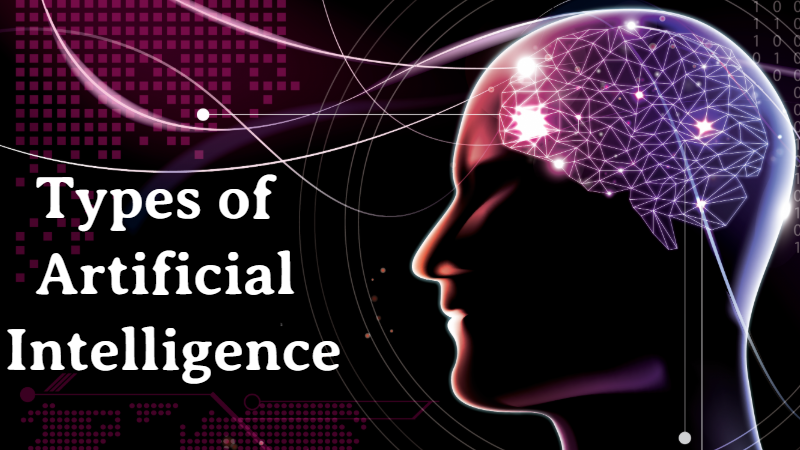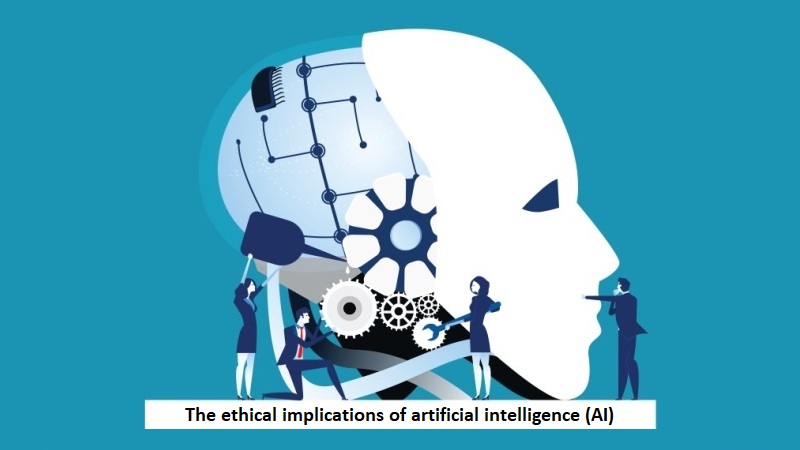What are the different types of AI?
There are several types of AI, each with its own characteristics and applications. Here are some of the most commonly recognized types of AI:
Reactive Machines:
These are the simplest type of AI systems that can only react to specific inputs with predetermined responses. They don’t have the ability to store past experiences or use them to make decisions in the future. Examples of reactive machines include chess-playing computers and facial recognition software.
Limited Memory:
These AI systems have the ability to use past experiences to inform future decisions. They can store and access a limited amount of data, and use it to optimize their performance. Examples of limited memory AI include self-driving cars, which use data about the environment to make driving decisions.
Theory of Mind:
This is a type of AI that is designed to understand and predict the behavior of others based on their mental states. It allows AI systems to interact more effectively with humans, by understanding their emotions, beliefs, and intentions.
Self-Aware:
This is the most advanced type of AI, which has the ability to understand its own existence, and to make decisions based on that understanding. This type of AI is still largely theoretical, and is the subject of ongoing research.
Learning:
This is a type of AI that uses machine learning algorithms to improve its performance over time. It can learn from data and experiences, and use that knowledge to make better decisions in the future. Examples of learning AI include recommendation systems, which use past behavior to make personalized recommendations.
Neural Networks:
This is a type of AI that is modeled after the structure of the human brain. It consists of interconnected nodes, which can process and analyze complex data. Neural networks are used in many applications, including image recognition and natural language processing.
Expert Systems:
These are AI systems that are designed to mimic the decision-making processes of human experts in a particular field. They can use rules and algorithms to make decisions based on the information available to them. Expert systems are used in many fields, including medicine and finance.
Natural Language Processing (NLP):
This is a type of AI that is designed to process and understand human language. NLP is used in many applications, including virtual assistants, chatbots, and voice recognition systems.
Robotics:
This is a type of AI that is used to control robots, allowing them to perform tasks that would normally require human intelligence. Robotics is used in many industries, including manufacturing, healthcare, and transportation.
Fuzzy Logic:
This is a type of AI that is designed to deal with uncertainty and imprecision. It allows AI systems to make decisions based on incomplete or ambiguous information. Fuzzy logic is used in many applications, including control systems and decision support systems.
Genetic Algorithms:
This is a type of AI that is modeled after the process of natural selection. It involves the use of evolutionary algorithms to optimize solutions to complex problems. Genetic algorithms are used in many fields, including engineering and finance.
Swarm Intelligence:
This is a type of AI that is modeled after the behavior of social animals, such as ants or bees. It involves the use of algorithms to coordinate the actions of multiple agents, allowing them to work together to solve complex problems. Swarm intelligence is used in many applications, including robotics and logistics.
Cognitive Computing:
This is a type of AI that is designed to simulate human thought processes, including reasoning, problem-solving, and decision-making. It is often used in applications such as fraud detection, risk analysis, and customer service.
Adversarial Networks:
This is a type of AI that is used to generate synthetic data that is similar to real-world data. It involves the use of two neural networks that are trained to compete against each other, with one network generating synthetic data and the other network trying to detect whether the data is real or synthetic. Adversarial networks are used in applications such as image and video generation.
Augmented Intelligence:
This is a type of AI that is designed to enhance human intelligence and decision-making, rather than replace it. It involves the use of AI algorithms to analyze and interpret data, and to provide recommendations or insights to human users. Augmented intelligence is used in many applications, including healthcare, finance, and marketing.
Explainable AI:
This is a type of AI that is designed to provide explanations for its decisions and actions. It is often used in applications where transparency and accountability are important, such as healthcare, finance, and law enforcement.
Transfer Learning:
This is a type of AI that allows knowledge learned in one domain to be applied to another domain. It involves the use of pre-trained models that can be adapted to new tasks with minimal additional training. Transfer learning is used in many applications, including natural language processing and computer vision.
Quantum AI:
This is a type of AI that is designed to run on quantum computers, which use quantum mechanics to perform calculations. Quantum AI has the potential to solve complex problems that are currently beyond the capabilities of classical computers, such as simulating complex chemical reactions and optimizing financial portfolios.
Edge AI:
This is a type of AI that is designed to run on edge devices, such as smartphones, wearables, and IoT devices, rather than on centralized servers. Edge AI enables real-time processing and decision-making, and it can reduce latency and bandwidth requirements.
Emotional AI:
This is a type of AI that is designed to recognize and respond to human emotions, such as happiness, sadness, anger, and fear. Emotional AI is used in applications such as virtual assistants, chatbots, and customer service.
Bayesian Networks:
This is a type of AI that is based on Bayesian probability theory, which allows AI systems to reason about uncertainty and make decisions based on probabilistic evidence. Bayesian networks are used in applications such as medical diagnosis, fraud detection, and risk analysis.
Reinforcement Learning:
This is a type of AI that involves training an AI agent through trial and error, using a system of rewards and punishments to guide its behavior. Reinforcement learning is used in applications such as game playing, robotics, and autonomous driving.
Evolutionary Computation:
This is a type of AI that is based on the principles of natural selection and genetic algorithms. It involves the use of algorithms to simulate the process of evolution, with the goal of optimizing solutions to complex problems. Evolutionary computation is used in many applications, including engineering, finance, and logistics.
Contextual AI:
This is a type of AI that is designed to understand and respond to the context in which it is used, such as the user’s location, preferences, and history. Contextual AI is used in applications such as personalized advertising, recommendation systems, and smart homes.
Swarm Intelligence:
This is a type of AI that is based on the principles of collective behavior, where a group of agents work together to solve a problem. Swarm intelligence is used in applications such as robotics, optimization, and traffic management.
Hybrid AI:
This is a type of AI that combines multiple AI techniques to solve complex problems. Hybrid AI can leverage the strengths of different AI techniques and overcome their weaknesses, making it a powerful approach for many applications.
Natural Language Processing (NLP):
This is a type of AI that is designed to understand and generate human language. NLP is used in applications such as virtual assistants, chatbots, and language translation.
Computer Vision:
This is a type of AI that is designed to interpret and analyze visual information, such as images and videos. Computer vision is used in applications such as autonomous driving, surveillance, and medical diagnosis.
Expert Systems:
This is a type of AI that is designed to mimic the decision-making process of a human expert in a particular domain. Expert systems are used in applications such as medical diagnosis, financial analysis, and engineering.
Generative Adversarial Networks (GANs):
This is a type of AI that involves the use of two neural networks, one that generates synthetic data and another that tries to distinguish between real and synthetic data. GANs are used in applications such as image and video generation, and they have the potential to revolutionize the creative industries.
Rule-based AI:
This is a type of AI that uses a set of predefined rules and logic to make decisions and take actions. Rule-based AI is used in applications such as expert systems, which are designed to mimic the decision-making process of a human expert in a particular domain.
Supervised Learning:
This is a type of machine learning where an algorithm is trained on a labeled dataset, where the correct answer is provided for each input. The algorithm learns to recognize patterns in the data and can then make predictions on new, unseen data. Supervised learning is used in applications such as image recognition, speech recognition, and natural language processing.
Unsupervised Learning:
This is a type of machine learning where an algorithm is trained on an unlabeled dataset, where the correct answer is not provided. The algorithm learns to recognize patterns and structure in the data, and can then cluster similar data points together or detect anomalies. Unsupervised learning is used in applications such as customer segmentation and anomaly detection.
Semi-Supervised Learning:
This is a type of machine learning that combines both supervised and unsupervised learning. In semi-supervised learning, an algorithm is trained on both labeled and unlabeled data, which can help improve the accuracy of the model and reduce the amount of labeled data required for training.
Deep Learning:
This is a type of machine learning that uses artificial neural networks, which are modeled on the structure of the human brain. Deep learning is used in applications such as image recognition, speech recognition, and natural language processing, and has achieved state-of-the-art results in many domains.
Fuzzy Logic:
This is a type of AI that is based on the principles of fuzzy set theory, which allows for uncertainty and imprecision in data and decision-making. Fuzzy logic is used in applications such as control systems, decision-making, and pattern recognition.
Genetic Algorithms:
This is a type of AI that is based on the principles of natural selection and genetics. Genetic algorithms involve the use of algorithms to simulate the process of evolution, with the goal of optimizing solutions to complex problems. Genetic algorithms are used in many applications, including engineering, finance, and logistics.
Neural Networks:
This is a type of AI that is based on the structure of the human brain. Neural networks consist of layers of interconnected nodes, or neurons, that are designed to process and transmit information. Neural networks are used in applications such as image and speech recognition, and have achieved state-of-the-art results in many domains.
Decision Trees:
This is a type of AI that is based on the principles of decision theory. Decision trees involve the use of a tree-like structure to model decisions and their possible consequences, based on a set of rules and criteria. Decision trees are used in applications such as medical diagnosis, financial analysis, and customer profiling.
Support Vector Machines (SVMs):
This is a type of machine learning algorithm that is used for classification and regression analysis. SVMs are designed to find the best hyperplane that separates data points into different classes, based on their features. SVMs
These are just a few more examples of the many different types of AI that exist today. As AI technology continues to advance, we can expect to see the emergence of new types of AI and new applications for existing types, which will continue to transform the way we live and work.




